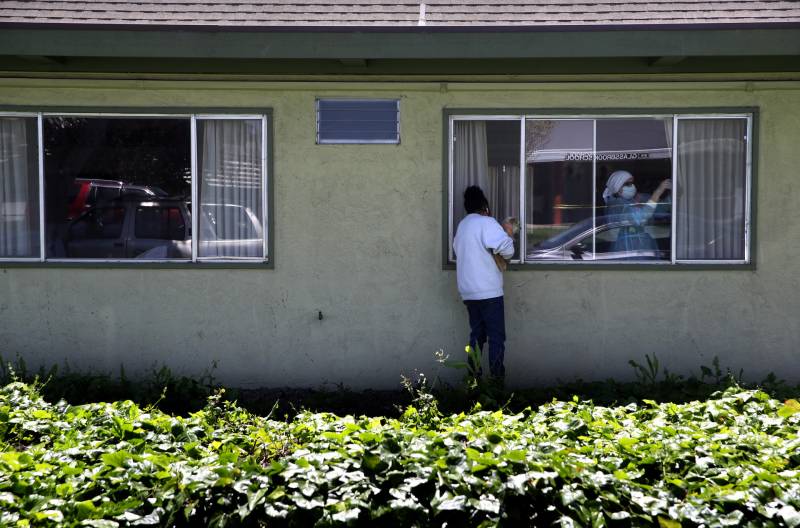As the coronavirus surges again, it is especially dangerous for people in nursing homes caring for more Black and Latino residents, according to a new analysis from the California Health Care Foundation.
Researchers found that skilled nursing facilities with a greater share of Black and Latino residents had higher rates of COVID-19 cases and deaths — and that disparity is growing.
“We asked [our] advisory group, how do you explain this disparity?” said Dr. Bruce Spurlock, executive director of Cal Hospital Compare, and a study co-author. “And nobody really knows. And that’s kind of the part that we really need to figure out.”
A Shift Over Time
Skilled nursing facilities have borne much of the weight of the pandemic. More than one quarter of reported COVID-related deaths in California have happened in nursing homes, even though their residents make up less than half a percent of the state’s population.

Beyond demographics, the new study analyzed state and federal data about ownership status, size, type of patient, staffing levels and geography to identify factors associated with the hardest-hit nursing homes.
And those factors changed as the pandemic wore on. Back in May, “you could tell that the larger the facility, the for-profit facilities, were doing worse than the smaller and nonprofit facilities,” Spurlock said.
By late summer, he said, facilities struggling to control the virus were in counties with high COVID-19 rates.
“Age, gender, race and ethnicity were a much bigger predictor of who was doing worse in the August time frame,” Spurlock said.
Nursing home residents over 85, and men, have been more vulnerable to the virus throughout California. And while Latinos account for about 60% of California’s positive coronavirus tests, they represent less than 40% of the state’s population. But across the state, COVID-positive tests for Blacks have been a disproportionately small part of the total.

